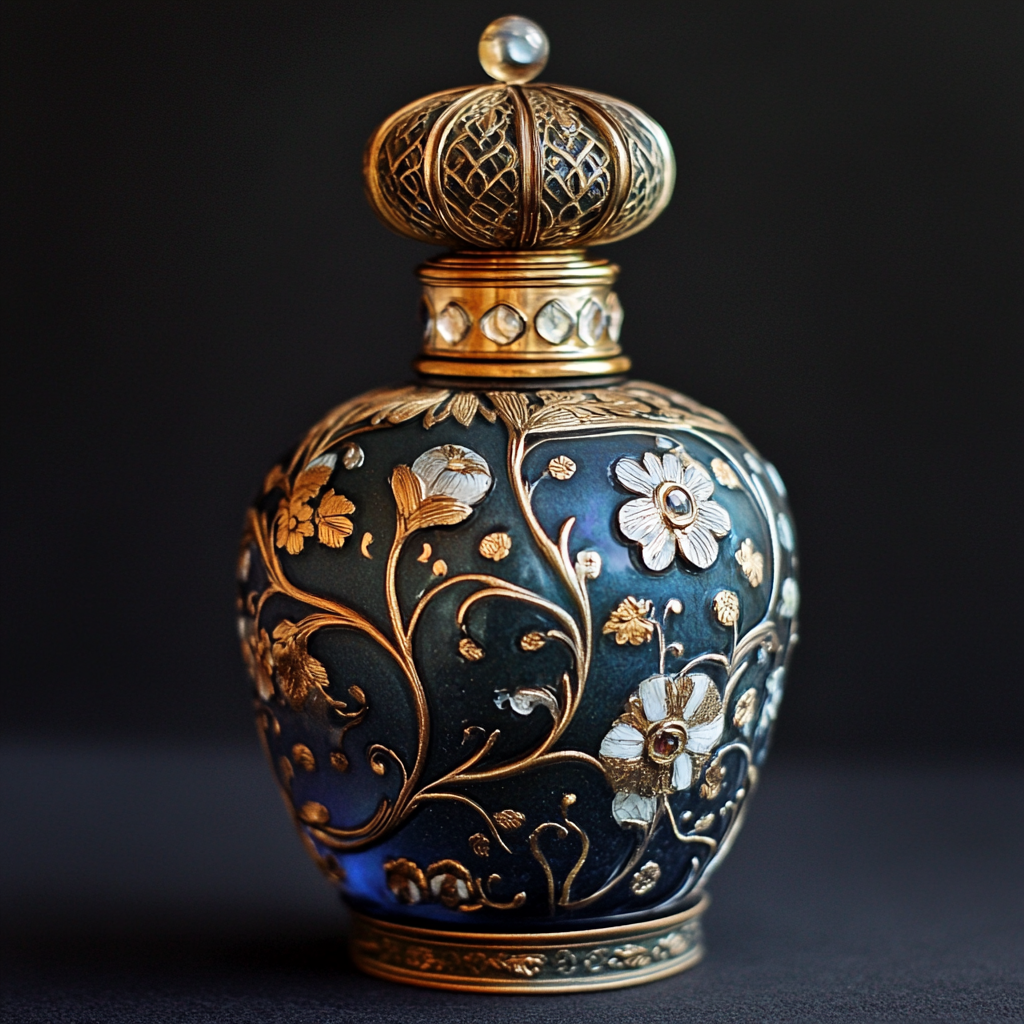The history of perfume bottles goes back thousands of years and is closely connected with the development of culture, art and technology. The bottles not only served to store fragrances, but were also works of art reflecting the era in which they were created. From simple clay vessels to exquisite glass masterpieces, bottles have gone through a long evolution, becoming part of the cultural heritage.
Ancient Roots: The First Perfume Vessels
The first perfume vessels appeared in ancient civilizations such as Egypt, Mesopotamia and India. They were used not only to store aromatic oils and incense, but also played an important role in religious and ritual ceremonies. The bottles were made from a variety of materials, including clay, stone and faience, and were often decorated with complex ornaments symbolizing the divine essence of aromas.
Bottles were of particular importance in Ancient Egypt, where perfume was an integral part of the culture. The Egyptians made glass bottles, decorating them with bright colors and patterns. These vessels not only stored valuable oils, but also served as a symbol of high status and wealth. It is important to note that it was the Egyptians who were the first to use perfume in everyday life, which became the starting point in the development of perfume art.
Middle Ages and Renaissance: The Art of Glassblowing
During the Middle Ages and the Renaissance, the art of creating perfume bottles developed significantly, especially in Europe. Master glassblowers from Venice and other centers of glass art became known for their unique and intricate pieces. Among the most popular types of bottles of that time are:
- Alabaster vessels – often used to store incense and oils.
- Bottles with mother-of-pearl coating – featured a sophisticated design and high-quality materials.
- Vessels with engraving – decorated with complex designs and symbols.
These bottles were not just containers for fragrances, but also luxury items and status symbols. During the Renaissance, perfume bottles became objects of collecting and exchange, facilitating the development of international trade and cultural exchange. Glass products from Venice, decorated with gold and silver threads, were especially valued for their beauty and grace.
Age of Enlightenment: Aesthetics and Functionality
The 18th century, known as the Age of Enlightenment, brought with it new ideas and aesthetic principles that were reflected in the design of perfume bottles. At this time, they came to the fore functionality and aesthetics, which led to the emergence of more ergonomic and elegant forms. Bottles have become more diverse in design and use of materials. Special attention was paid to detail and quality of workmanship, making each bottle a unique work of art.
The appearance of the first mass market perfumes also contributed to a change in approach to bottle design. Manufacturers sought to create bottles that would attract the attention of buyers and emphasize the uniqueness of the fragrance. This time was marked by the appearance of bottles of unusual shapes, such as miniature sculptures and stylized bottles, which made it possible to distinguish the product from its competitors.
19th century: A revolution in design and production
The 19th century was a time of revolutionary changes in the design and production of perfume bottles. The Industrial Revolution and the development of technology have greatly simplified the process of manufacturing glass and other materials. This led to the mass production of bottles, making perfume more accessible to a wider audience.
The Art Nouveau period brought new stylistic trends, reflected in the design of perfume bottles. During this period, bottles with exquisite nature-inspired patterns and asymmetrical shapes became popular. Masters such as René Lalique transformed perfume bottles into true works of art, using new techniques and materials such as colored glass and ceramics. This time also marked the beginning of the widespread use of branding, which helped companies stand out in a saturated market.
Modernity: Technology and sustainable development
In the modern era, perfume bottles continue to evolve, taking into account not only aesthetic but also environmental aspects. Advances in technology have made it possible to create bottles from environmentally friendly materials such as recycled glass and biodegradable plastics. This trend reflects growing public concern about environmental issues and sustainable development.
Modern bottles feature a minimalist design and an emphasis on the brand’s individuality. Many companies collaborate with famous artists and designers to create unique bottles that become an integral part of the product’s identity. In addition, the development of 3D printing technologies and other innovative production methods makes it possible to create bottles of complex shapes and designs, which was previously impossible.
The history of perfume bottles reflects the evolution of human culture and art. From ancient vessels to modern works of design art, bottles have come a long way, becoming more and more functional, aesthetic and environmentally friendly. They continue to be not only a means of storing aromas, but also an important element of cultural and aesthetic heritage.
Mass production reduced the cost of bottles, making them accessible to a wider audience, and also accelerated the development and introduction of new designs.
Today, the main trends are the use of environmentally friendly materials, minimalism in design and an emphasis on brand personality.

